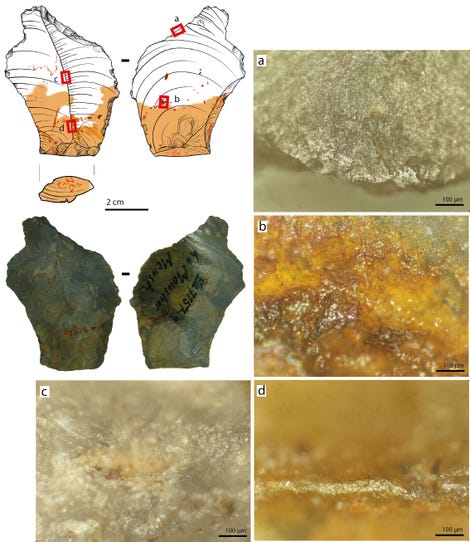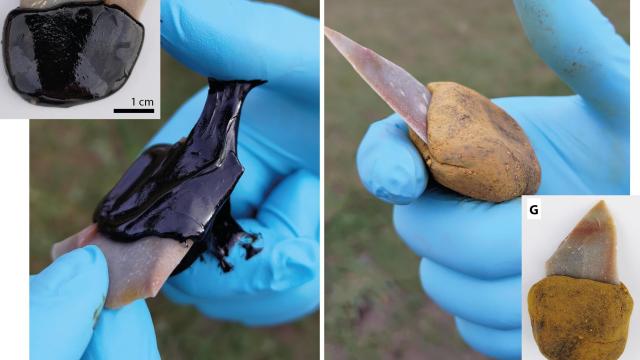A trove of Neanderthal tools made between 120,000 and 40,000 years ago were forged with glue, according to a team of researchers that recently studied the objects.
The research revealed the oldest evidence of a complex adhesive in Europe, according to an NYU release. The adhesive—composed of bitumen, an asphalt component that also occurs naturally in soil, and ochre—was found in trace amounts on stone tools from Le Moustier, a Neanderthal site in France. The findings were published this week in Science Advances.
”When used as handheld grips on cutting or scraping tools, a behavior known from Neanderthals, high-ochre adhesives present a real benefit, improving their solidity and rigidity,” the authors wrote in the paper.

Bitumen is an adhesive in its own right, but as a liquid doesn’t make for a great glue. But when combined with ochre—the same stuff Neanderthals and early modern humans used to make artwork on cave walls—it makes a sculptable solid, which the Neanderthals applied to scrapers, flakes, and blades at Le Moustier. The team studied five stone tools with signs of ochre on them: three flakes, a re-touched blade, and a side scraper.
“Compound adhesives are considered to be among the first expressions of the modern cognitive processes that are still active today,” said Patrick Schmidt, an archaeologist at the University of Tübingen and the study’s lead author, in the same release. Neanderthals were intelligent and inventive, as evidenced by their artworks and array of tools.
The glommed-together bitumen-ochre mass stuck to the stone alright, but wouldn’t adhere to hands—making it a perfect material for crafting a tool’s handle. Microscopic imaging of the tools revealed two kinds of wear: one that indicated other materials were worked and one that indicated the adhesive itself was worn by use. The team believes, then, that the adhesives were used as handles themselves, rather than joining stone tools to handles.
The Le Moustier finds were made in 1907 but have been in storage since the 1960s. “As a result, the adhering remains of organic substances were very well preserved,” said study co-author Ewa Dutkiewicz, a researcher at the University of Tübingen and Berlin’s Museum of Prehistory and Early History, in the release.
Our modern understanding of Neanderthals is a far cry from older, outdated ideas about our nearest Homo relatives. Though they went extinct around 40,000 years ago, Neanderthal DNA persists in most people today, an indicator of how the Neanderthals were gradually subsumed into Homo sapiens.
